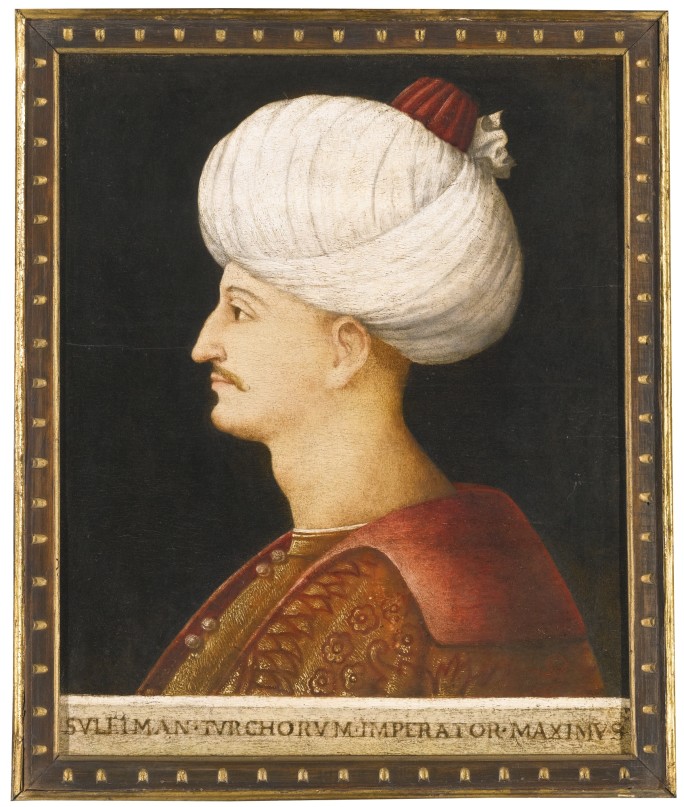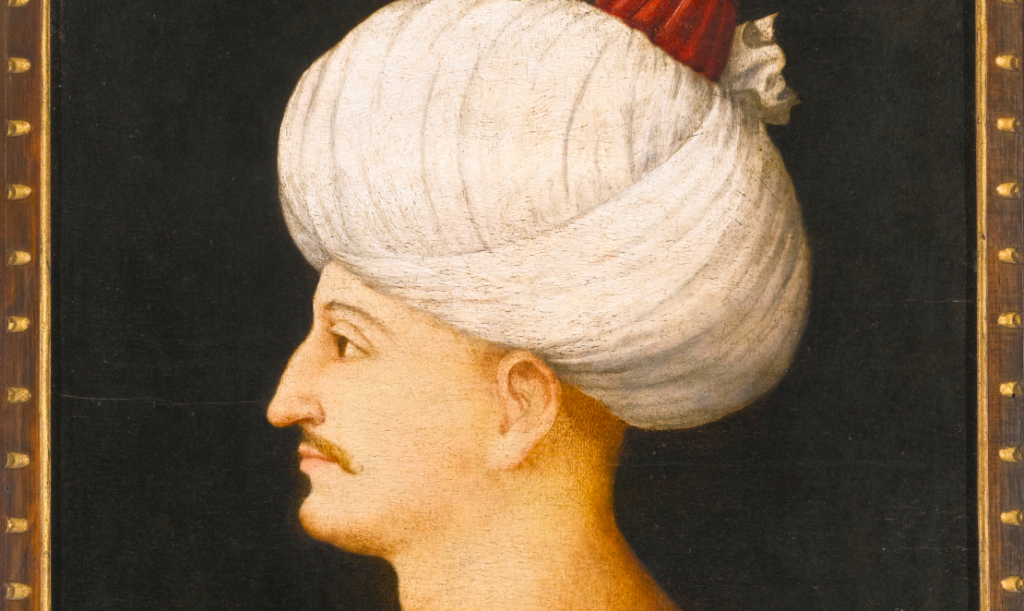A portrait of Ottoman ruler Süleyman the Magnificent has been sold for more than £5.3 million at an auction in London.
The 500-year-old painting went under the hammer on Wednesday, 1 May, for a total of £5,323,500. That was more than 15 times the initial estimate of £250,000 to £350,000, according to auction house Sotheby’s.
The name of the buyer has not been revealed. It was sold as part of a collection of over 300 items that were auctioned off under the title “Arts of the Islamic World”. The winning offer came at the end of a “lengthy three-way bidding battle” according to the website artdaily.com.
The portrait is believed to be the work of a follower of Italian painter Gentile Bellini. It was produced in Venice “circa 1520” – the year Süleyman the Magnificent became sultan of the Ottoman Empire, ruling for the next 46 years.
“Both from a historical and art-historical point of view, the present portrait is a landmark,” a catalogue note from Sotheby’s issued before the auction said.
“Not only is it one of the few Western images of an Eastern potentate done by a European artist, but it probably also served as a primary source of inspiration for many later portraits, drawings, prints and medals of Sultan Süleyman the Magnificent.”
The note added that Süleyman the Magnificent “does not seem to have commissioned any portraits” and that “details of his physical appearance were conveyed to European artists through sketches created by artists who had accompanied foreign embassies to the Ottoman court”.
It says the two earliest known surviving depictions of the ruler as a young man are both dated 1526: “Scholarly debate has come to the conclusion that these two depictions were probably copied after a ‘lost model’ created just after Sultan Süleyman’s accession to the throne in 1520.
“The present portrait bears striking similarities to both illustrations and it is possible that it may even be the original ‘lost’ model from which such depictions of the Sultan stemmed.
“Resemblances in the shape of his turban, the large drooping collar of his robe, his aquiline nose, fine lips and gently protruding chin with a thin moustache and slight delineation of his Adam’s apple point towards this connection.”
The artwork also carries an inscription referring to the sultan as “Turchorum Imperator Maximus” meaning “Great Turkish Emperor”, according to Sotheby’s.
The three people who “battled it out” for the portrait included one online bidder, Edward Gibbs, Sotheby’s Middle East and India Chairman, was quoted as saying by artdaily.com.
“There has been a real buzz in our exhibitions over the past week,” he said. “One snapshot into this was the fervour and determination with which three bidders – including one joining us from online – battled it out for the Venetian portrait of fabled Ottoman Sultan Süleyman the Great, an artwork that perfectly encapsulates the desired elements of rarity, provenance and beauty, as well as the notion of creative synergy between different cultures that is so inherent in our category.”
The website also reported that a rare intact Iznik “Golden Horn” pottery dish, dated around 1530, sold for £531,000.




